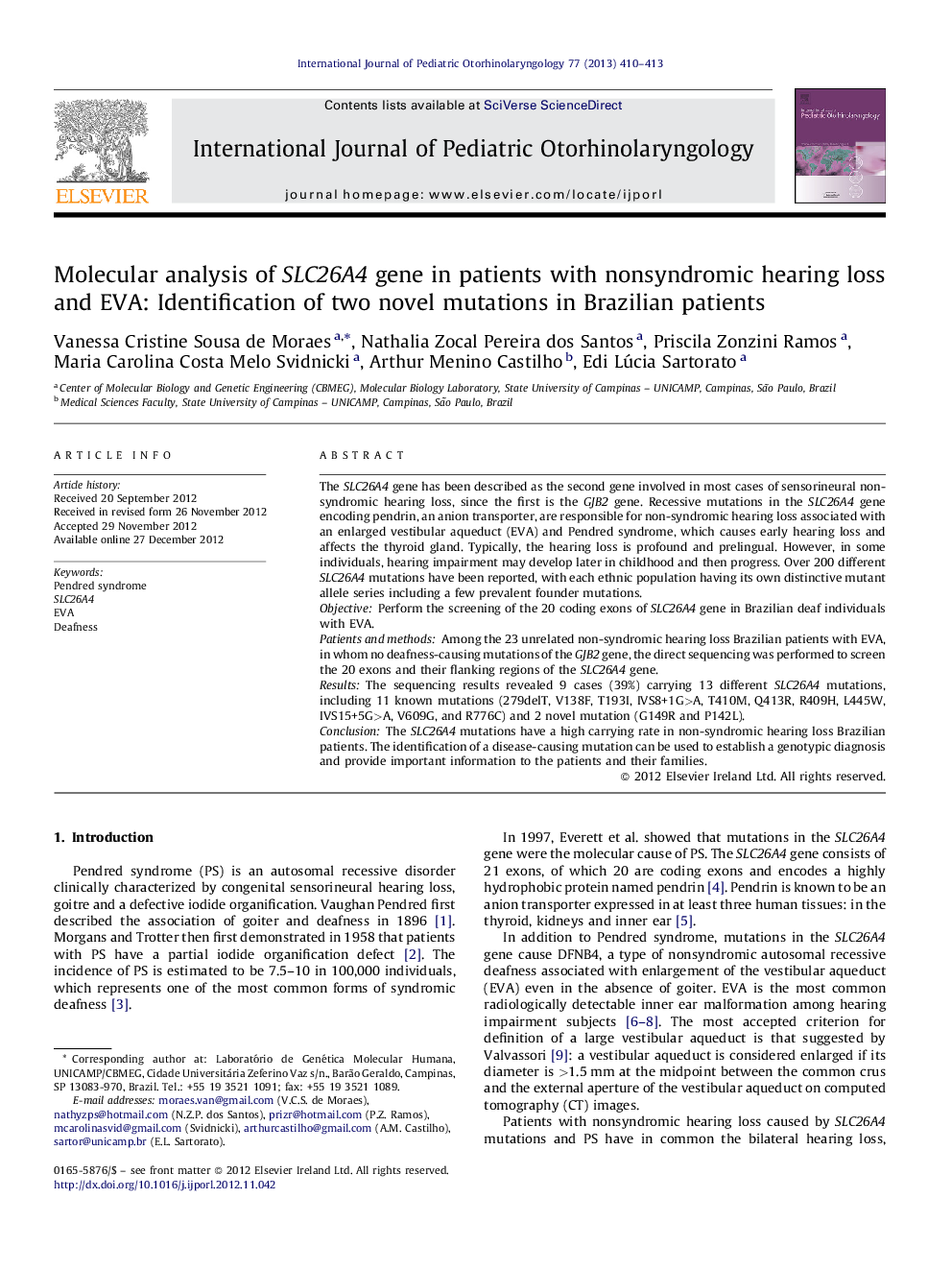| Article ID | Journal | Published Year | Pages | File Type |
|---|---|---|---|---|
| 6213655 | International Journal of Pediatric Otorhinolaryngology | 2013 | 4 Pages |
The SLC26A4 gene has been described as the second gene involved in most cases of sensorineural non-syndromic hearing loss, since the first is the GJB2 gene. Recessive mutations in the SLC26A4 gene encoding pendrin, an anion transporter, are responsible for non-syndromic hearing loss associated with an enlarged vestibular aqueduct (EVA) and Pendred syndrome, which causes early hearing loss and affects the thyroid gland. Typically, the hearing loss is profound and prelingual. However, in some individuals, hearing impairment may develop later in childhood and then progress. Over 200 different SLC26A4 mutations have been reported, with each ethnic population having its own distinctive mutant allele series including a few prevalent founder mutations.ObjectivePerform the screening of the 20 coding exons of SLC26A4 gene in Brazilian deaf individuals with EVA.Patients and methodsAmong the 23 unrelated non-syndromic hearing loss Brazilian patients with EVA, in whom no deafness-causing mutations of the GJB2 gene, the direct sequencing was performed to screen the 20 exons and their flanking regions of the SLC26A4 gene.ResultsThe sequencing results revealed 9 cases (39%) carrying 13 different SLC26A4 mutations, including 11 known mutations (279delT, V138F, T193I, IVS8+1G>A, T410M, Q413R, R409H, L445W, IVS15+5G>A, V609G, and R776C) and 2 novel mutation (G149R and P142L).ConclusionThe SLC26A4 mutations have a high carrying rate in non-syndromic hearing loss Brazilian patients. The identification of a disease-causing mutation can be used to establish a genotypic diagnosis and provide important information to the patients and their families.
